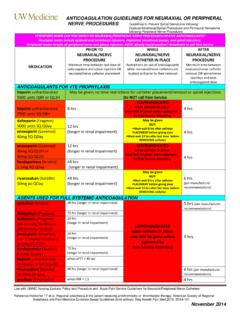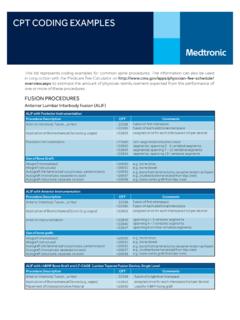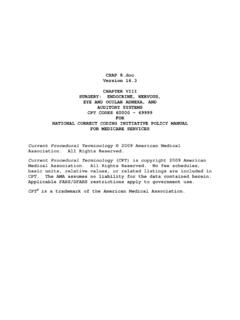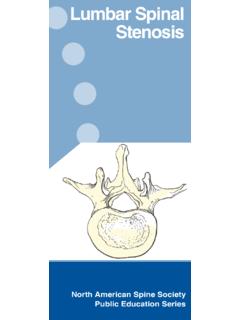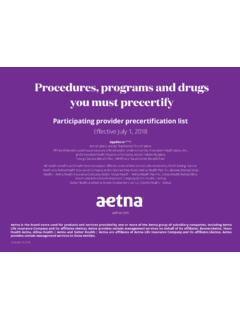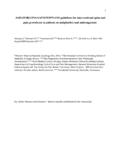Transcription of Selective Nerve Root Blocks - Introduction
1 MR. PATRICK J. McKENNA MBBS, FRCS (Tr & Orth) Consultant Spinal Surgeon Secretary: Marilyn Barras Email: Tel: 0118 955 3476 Fax: 0118 958 6905 Dunedin Hospital 16 Bath Road Reading Berks. RG1 6NS Selective Nerve root Blocks Information for Patients Anatomy: The vertebral column, or spinal column, is made up of bony vertebrae separated by intervertebral discs and held together by muscles and ligaments. The spine functions as a supporting axis of the body and carries within it the spinal cord and spinal nerves. Spinal nerves exit the spine through small gaps called foramen between the vertebrae of the spinal column.
2 The spinal nerves convey impulses that allow muscles to contract resulting in movement of joints in the peripheral skeleton. They also convey impulses from sensations to the central nervous system from the peripheries. Pathology: Chemical irritation or mechanical compression of a spinal Nerve can result in pain which radiates to the area of the body normally supplied by that Nerve . Resultant pain to the back of the thigh and to the calf or foot this is termed sciatica or radicular pain.
3 There are probably two main mechanisms by which sciatica occurs: chemical neuritis and mechanical compression as a result of a herniated intervertebral disc (prolapsed disc). The inside of the disc (the nucleus) is very irritant and causes a painful chemical inflammatory reaction if released to sit near the Nerve as a result of a disc tear. Mechanical compression causes pain as a result of pressure on the Nerve from a herniated disc prolapse. To complicate matters, not all compressed nerves are painful. An MRI scan usually shows the cause of sciatica or radicular pain, but not always.
4 An MRI scan may reveal that several nerves are compressed but it does not tell you which of those nerves are painful. Clinical Picture: The most common symptoms associated with Nerve root problems include: Pain radiating from the back or neck down an arm or leg Numbness or tingling in an arm or leg A sensation of weakness in an arm or leg Selective Nerve root block : A Selective Nerve root block is an injection performed under local anaesthetic and x-ray guidance to deliver long-acting local anaesthetic with an anti-inflammatory steroid to the painful Nerve . The procedure is both diagnostic and Selective Nerve root picks out, for example, the L5 Nerve , injection of steroid and local anaesthetic will often reproduce the course of the pain in the periphery.
5 Diagnostically a Nerve root block can be very useful. If an L5 Nerve root block is performed and the procedure reproduces the pain during at the time of the injection around the Nerve root , and also removes the pain shortly afterwards (due to the local anaesthetic infiltrated), then the block would be considered positive. This would strongly suggest that the L5 Nerve was responsible for the radicular pain. On the other hand, if the block neither reproduces the pain nor resolves the pain afterwards, this may help exclude that particular Nerve as a pain source. Pain relief following a Nerve root can sometimes be more or less immediate, with some patients reporting that their symptoms have been relieved within 30 minutes or less of having the procedure.
6 The injection therefore has successfully confirmed that the specific Nerve that has been blocked is the pain source. Some patients, however, do not experience significant levels of pain relief. If the pain is not substantially reduced by the procedure, then it is possible that the Nerve that has been blocked is not actually the one that is causing the pain. Given the number of nerves there are in the body and in the spinal region in particular, it can be exceptionally difficult to pinpoint the exact Nerve that is causing the problem. Consequently, the procedure has not failed as such; it has simply eliminated a specific Nerve as being the source of the pain.
7 Sometimes a negative block is very useful in aiding diagnosis, especially in the presence of multi-level Nerve compression. Selective Nerve root Blocks are usually administered in the following manner: The patient lies on his/her stomach on an x-ray couch. Fluoroscopic x-rays are carried out throughout the procedure to ascertain correct positioning of the needle(s). The area to be injected is cleansed with a sterile swab. Under local anaesthetic, a needle is gently passed towards the ligaments of the back or the neck close to the target Nerve . A small amount of contrast dye is injected to confirm on x-ray that the needle is lying in the correct position.
8 A mixture of local anaesthetic and steroid is injected around the Nerve . The needle is then withdrawn. X-rays showing a needle placed under the L5 pedicle (left), and x-ray after the injection of opaque dye to show correct positioning of the needle and to confirm optimal drug delivery Patients are often very concerned that the procedure will be very painful. The procedure can be painful and reproduce the peripheral symptoms significantly. This seems to be related in part to how inflamed and sensitive the Nerve is at the time of injection . The procedure itself takes only 1-2 minutes to perform and the discomfort caused during the delivery of the steroid usually lasts no more than 10 -20 seconds.
9 As with all procedures there are associated risks to undergoing a Nerve root block . These are, however, usually minor and serious complications are extremely rare. The risks and side effects include: Infection this is a very rare complication Increased discomfort for the first few days following the injection A bruise at the injection site Numbness or weakness of a limb; this is a common side-effect of the local anaesthetic part of the injection and may last a few hours Temporary difficulty taking weight through the affected side Allergic reaction to the injected medication Following the Nerve root block , the patient is able to leave hospital immediately but should have arranged for a driver to take them home.
10 Patients should rest for the remainder of the day following the injection and care should be taken to avoid any highly stressful activities to either the neck or the back for the first few days. Improvement in symptoms can occur immediately or due to the flushing effect of the injectate, or may take up to 2 weeks to achieve the anti-inflammatory action of the steroid. Patients will be seen again in clinic 4-6 weeks after undergoing a Nerve root block at which time the procedure will be evaluated and further management decided.
